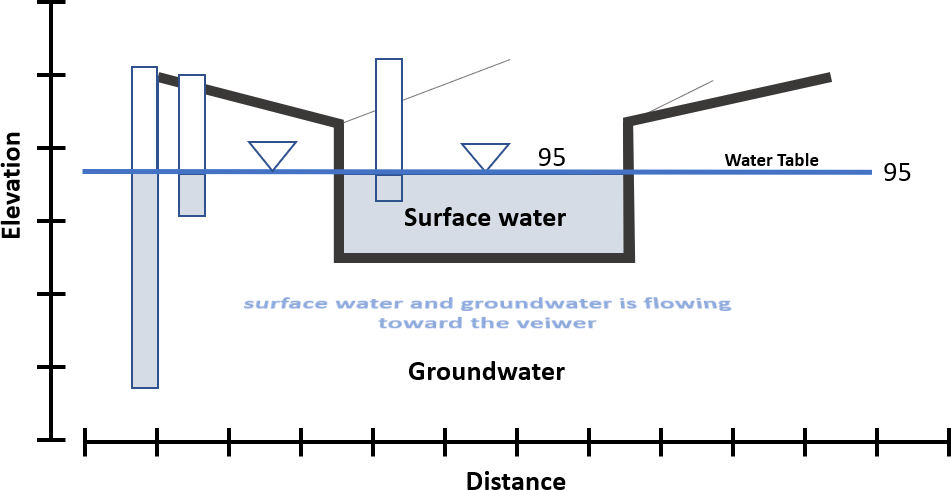1.5 Zero-Exchange or Parallel Flow Conditions
A zero-exchange or parallel flow condition occurs where no exchange is observable. This is found when the water table elevation is equal to the surface-water stage (river, lake, and wetland) (Figure 8). As both the stage and water table are at a common elevation, no hydraulic gradient is present, and the groundwater flow is parallel to the surface-water flow. Representative monitoring wells, open only at the bottom, illustrate that the water levels in wells finished at multiple depths are equal to the surface-water stage. No equipotential lines are shown in Figure 8 because wells and the surface-water stage are a common equipotential line. Flow is illustrated as parallel to the surface-water feature (out of the page). In these settings the stage represents the local water table elevation.

